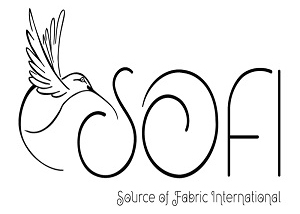When it comes to versatile materials, woven cotton fabric stands out as a favorite for many. Known for its durability and breathability, this fabric is a staple in both fashion and home decor. Whether you’re crafting a cozy quilt or designing a stylish outfit, woven cotton offers endless possibilities that cater to your creative needs.
The unique weaving process enhances the fabric’s texture, making it soft to the touch while providing strength. With its natural fibers, woven cotton is not only comfortable but also eco-friendly, appealing to those who prioritize sustainability. As you explore the world of woven cotton, you’ll discover its rich history and the myriad ways it can elevate your projects.
Understanding Woven Cotton Fabric
Woven cotton fabric stands out for its comfort, strength, and versatility. Crafted through a specific weaving process, this fabric provides a unique texture suitable for various applications in fashion and home decor.
What Is Woven Cotton Fabric?
Woven cotton fabric consists of threads that intersect at right angles, creating a stable and durable material. The production process involves spinning cotton fibers into yarn, which is then woven together on a loom. This method gives woven cotton its characteristic texture, enhancing its breathability and comfort. Common varieties of woven cotton include plain weave, twill, and sateen. Each type offers different benefits and uses, making it suitable for everything from clothing to upholstery.
Types of Woven Cotton Fabrics
Various types of woven cotton fabrics differ in texture and application.
- Plain Weave: This is the simplest weave pattern, offering a flat and uniform surface. It provides durability and is commonly found in basic shirts and sheets.
- Twill Weave: This weave features a diagonal pattern, making it more robust and resistant to wrinkles. Twill cotton is frequently used for denim and chinos.
- Sateen Weave: Sateen cotton has a glossy finish and a luxurious feel, often used for bed linens and dressmaking.
- Canvas: A heavier, sturdier option, canvas is ideal for bags and outdoor gear due to its strength.
- Oxford: This fabric is slightly textured and often seen in dress shirts, providing a refined look.
Advantages of Woven Cotton Fabric
Woven cotton fabric offers numerous advantages, making it a preferred choice for many.
- Durability: The weaving process creates a strong fabric that withstands regular use and wear.
- Breathability: Woven cotton allows air to circulate, making it comfortable in warm weather.
- Versatility: Suitable for various applications, it can be tailored into apparel, home furnishings, and accessories.
- Easy Care: Most woven cotton fabrics are machine washable and maintain their appearance through multiple washes.
- Sustainability: Being made from natural fibers, woven cotton is more eco-friendly compared to synthetic fabrics, appealing to environmentally conscious consumers.
Choosing the Right Woven Cotton Fabric
Choosing the appropriate woven cotton fabric involves evaluating several factors that align with your project needs. You set clear criteria to guide your selection, ensuring quality and suitability.
Considerations for Fabric Selection
Select the woven cotton fabric based on specific qualities. Assess the fabric weight; lighter weights suit summer clothing while heavier weights fit for winter wear or upholstery. Examine the texture; smooth surfaces work well for formal attire, whereas coarse textures suit casual or rustic styles. Review the weave type, as plain weave offers basic durability while twill and sateen add unique looks and feels.
Evaluate color options and prints as these influence the design theme. Bright colors enhance a lively atmosphere, while muted tones provide a calm feel. Check for washability and maintenance requirements; many cotton fabrics are machine washable, but some prints may require special care. Anticipate shrinkage; pre-shrunk options minimize size changes after wash.
Focus on sustainability as well; select fabrics dyed with eco-friendly methods and sourced from responsible manufacturers. Ensure the fabric meets your project’s budget; high-quality fabrics might cost more, but their longevity can provide savings over time.
Common Uses of Woven Cotton Fabric
Use woven cotton fabric in diverse applications due to its versatility. Fashion design benefits from its soft feel and breathable nature. You can create comfortable shirts, dresses, or summer shorts. The fabric’s drape offers ideal options for flowing garments.
In home decor, woven cotton fabric serves well for making curtains, table linens, and cushion covers. Its strength means it withstands daily use while maintaining an attractive appearance. Consider upholstery projects, as thick cotton can recover well from wear, making it great for chairs and sofas.
Crafting projects also utilize woven cotton fabric. It’s perfect for making bags, quilts, or aprons. Woven cotton provides a reliable base for appliqué or embroidery, adding a personal touch to handmade items.
Use woven cotton in children’s apparel, where breathability and comfort hold importance. Fabrics without harsh finishes or chemicals enhance the safety of your creations. The applications demonstrate the fabric’s adaptability, highlighting its benefits across numerous projects.
Preparing Woven Cotton Fabric for Use
Preparing woven cotton fabric for your projects ensures optimal quality and performance. Follow these steps for effective training and maintenance.
Washing and Prepping the Fabric
Washing woven cotton fabric effectively removes any residue from the manufacturing process. Begin by filling a washing machine with cold water. Add a mild detergent specifically designed for delicate fabrics. Place the fabric in the machine and run a gentle cycle.
After the wash, inspect the fabric for any color bleeding. Rinse the fabric in cold water to eliminate excess detergent. If bleeding occurs, you may need to wash it separately.
Line drying or an air-dry cycle works best for woven cotton. Avoid direct sunlight to prevent fading. Once dry, fold the fabric neatly to avoid creases. Prepping your fabric before cutting ensures an accurate and clean finish for your project.
Ironing Techniques for Woven Cotton Fabric
Ironing woven cotton fabric enhances its appearance and removes wrinkles. Select the right temperature setting on your iron, typically on medium heat for cotton.
Start ironing while the fabric is slightly damp for better results. Use a spray bottle to mist dry areas as needed. Press down the iron gently, moving in the direction of the weave to prevent snags.
For intricate patterns or seams, utilize a pressing cloth to avoid direct contact between the iron and fabric. This technique protects printed designs and delicate weaves. Iron both sides for a polished look. After ironing, hang or fold the fabric immediately to maintain its crisp finish.
Maintaining proper washing and ironing techniques prolongs the life of your woven cotton fabric, ensuring your projects look their best.
Sewing with Woven Cotton Fabric
Sewing with woven cotton fabric offers an enjoyable experience due to its ease of handling and versatility. Follow these guidelines to ensure successful projects.
Recommended Tools for Sewing
- Sewing Machine: Use a sewing machine suitable for woven fabrics. A basic machine with straight and zigzag stitch options suffices.
- Universal Needles: Select universal needles, typically size 80/12 or 90/14. These sizes work well with most woven cotton fabrics.
- Thread: Opt for 100% cotton or polyester thread to match the fabric’s durability. Avoid using weaker threads that may break.
- Fabric Scissors: Keep sharp fabric scissors for clean cuts. Use these scissors only for fabric to maintain their edge.
- Pins: Use fine pins to avoid damaging the fabric. Consider using fabric clips as an alternative to avoid mark indentations.
- Measuring Tape: Employ a flexible measuring tape for accurate dimensions. Double-check measurements before cutting.
- Iron: Utilize an iron to press seams. Press seams flat to ensure a polished final product.
- Cutting Mat and Rotary Cutter: For precision cutting, a rotary cutter with a cutting mat can enhance speed and accuracy.
These tools make the sewing process smoother and help achieve better results.
Step-by-Step Sewing Instructions
- Prewash Fabric: Start by washing the woven cotton fabric to remove any finishes. Use cold water and mild detergent. Dry the fabric thoroughly.
- Prepare the Pattern: Lay the pattern on the fabric according to the grain. Pin the pattern securely, ensuring it aligns with fabric edges.
- Cut the Fabric: Cut the fabric using sharp scissors or a rotary cutter. Follow the pattern edges carefully to maintain accuracy.
- Pin the Pieces: Pin the fabric pieces together before sewing. Space pins every few inches to keep them aligned.
- Sew Seams: Use a straight stitch to sew seams. Maintain a ¼ inch seam allowance for most projects unless specified otherwise.
- Press Seams: Press seams open after sewing. This step eliminates bulk and results in neater seams.
- Finish Edges: To prevent fraying, finish the edges using a zigzag stitch or serger. This ensures durability in the fabric over time.
- Hem: Fold the edges of the fabric to create a hem. Pin and sew a straight stitch to secure the hem in place.
Following these instructions will lead to successful sewing projects with woven cotton fabric.
Caring for Woven Cotton Fabric
Caring for woven cotton fabric helps maintain its quality and prolongs its lifespan. Follow the guidelines below to ensure your projects stay vibrant and functional.
Washing Instructions
Washing woven cotton fabric requires attention to detail to avoid damage. Use cold water when washing, as hot water may cause shrinkage. Select a gentle cycle on your washing machine to minimize wear. Choose a mild detergent that keeps colors intact and prevents fading. Always inspect the fabric for color bleeding before washing; testing a small area helps confirm the stability of dyes.
For heavily soiled items, pre-soaking might be necessary. Soak the fabric in cold water mixed with mild detergent for about 30 minutes before the wash cycle. Avoid using bleach on colored fabrics, as this can weaken fibers and alter colors.
After washing, air drying is recommended to maintain shape and prevent further shrinkage. If using a dryer, select a low heat setting and remove items promptly to reduce wrinkling.
Ironing and Storing Tips
Ironing woven cotton fabric maintains a neat appearance. Always iron while the fabric is slightly damp to achieve smoother results. Select a medium heat setting on the iron. Use a pressing cloth for delicate patterns or textures to avoid potential scorching. For stubborn wrinkles, steam irons can be effective, but ensure to keep the iron moving to prevent burns.
Storing woven cotton fabric properly helps preserve its quality. Fold the fabric neatly to avoid creases. Store in a cool, dry place, away from direct sunlight to prevent fading. If storing for long periods, consider using cotton bags instead of plastic, as plastic can trap moisture and cause mildew.
Always check for pests or moisture before using stored fabric again, as these can damage the material. Saving woven cotton fabric with care keeps it looking fresh for future projects.
Troubleshooting Common Issues with Woven Cotton Fabric
Common issues with woven cotton fabric can arise during use and care. Addressing these issues promptly helps maintain the quality of the fabric.
Dealing with Shrinkage
Shrinkage often occurs with woven cotton fabric after washing. To prevent significant shrinkage, opt for cold water washing. Use a gentle cycle to lower the risk of fabric distortion. After washing, air dry instead of using a dryer, as heat from the dryer contributes to additional shrinkage. If shrinkage has already happened, stretch the fabric gently while damp to reshape it. Test a small area first. For preemptive measures, consider selecting pre-shrunk woven cotton fabric for your projects to minimize risks. Checking care labels on the fabric also provides guidance on how best to manage shrinkage.
Removing Stains from Woven Cotton
Removing stains from woven cotton requires immediate action. Depending on the type of stain, treat it differently. For food stains, blot with a clean cloth to absorb excess liquid. Use a mixture of cold water and mild detergent for cleaning. Apply this solution directly to the stain, allowing it to sit for 10 minutes. For grease stains, sprinkle baking soda over the area to absorb oil, then follow with the detergent solution. Rinse the area thoroughly with cold water. If stains persist, consider using a stain remover specifically designed for cotton fabrics. Always check the label for compatibility. Once treated, wash the fabric as normal to ensure complete removal of stains while preventing further damage.
Fixing Frayed Edges
Frayed edges on woven cotton can occur due to wear and improper care. To fix frayed edges, cut the frayed area evenly with sharp fabric scissors for a clean edge. If the fraying is extensive, consider applying a fabric glue or a fray check solution to prevent further unraveling. For a more polished appearance, use a sewing machine to stitch along the edge, securing any loose threads and providing a finished look. If you prefer a hand-sewn approach, use a simple slip stitch to seal the edge, ensuring durability. Always finish raw edges when sewing to prolong the life of the fabric and prevent fraying, especially on items subjected to regular wear.
Conclusion
Woven cotton fabric stands out as a top choice for those who value quality and versatility. Its unique properties make it ideal for a wide range of applications from fashion to home decor. By understanding its structure and benefits you can make informed decisions for your projects.
With proper care and maintenance you can ensure that your woven cotton items remain vibrant and functional for years to come. Whether you’re sewing a new garment or redecorating your space this fabric offers endless possibilities. Embrace the creativity woven cotton brings to your life and enjoy the comfort and style it provides.
Frequently Asked Questions
What is woven cotton fabric?
Woven cotton fabric is a textile made by weaving cotton threads together at right angles. This process creates a strong, stable material known for its durability and breathability, making it ideal for clothing and home decor.
What are the advantages of using woven cotton?
Woven cotton offers several advantages, including durability, breathability, versatility, and ease of care. It’s also eco-friendly, appealing to those who prioritize sustainable materials for fashion and home projects.
How do I choose the right woven cotton fabric?
To choose the right woven cotton fabric, consider factors like fabric weight, texture, weave type, color options, and washability. Be sure it aligns with your project’s needs and your budget for the best results.
What are common uses of woven cotton fabric?
Woven cotton is versatile and commonly used in fashion design, home decor, crafting, and children’s apparel, where comfort and breathability are crucial. Its adaptability makes it suitable for a variety of creative projects.
How should I wash and care for woven cotton fabric?
Wash woven cotton fabric in cold water using a gentle cycle with mild detergent. For drying, air drying is preferable. Iron on medium heat while slightly damp, using a pressing cloth for delicate areas to maintain quality.
What tools do I need for sewing with woven cotton?
Essential sewing tools for woven cotton include a reliable sewing machine, universal needles, sharp fabric scissors, pins, and an iron. These tools help ensure a smooth and enjoyable sewing experience.
How can I prevent shrinkage in woven cotton fabric?
To prevent shrinkage, always wash woven cotton in cold water and air dry. Using pre-shrunk fabric for projects can also help avoid surprises after washing.
What should I do if my woven cotton fabric has stains?
For stained woven cotton, act quickly by treating the stain based on its type. Mild detergent solutions work well for most stains, while specific treatments may be needed for grease stains.


